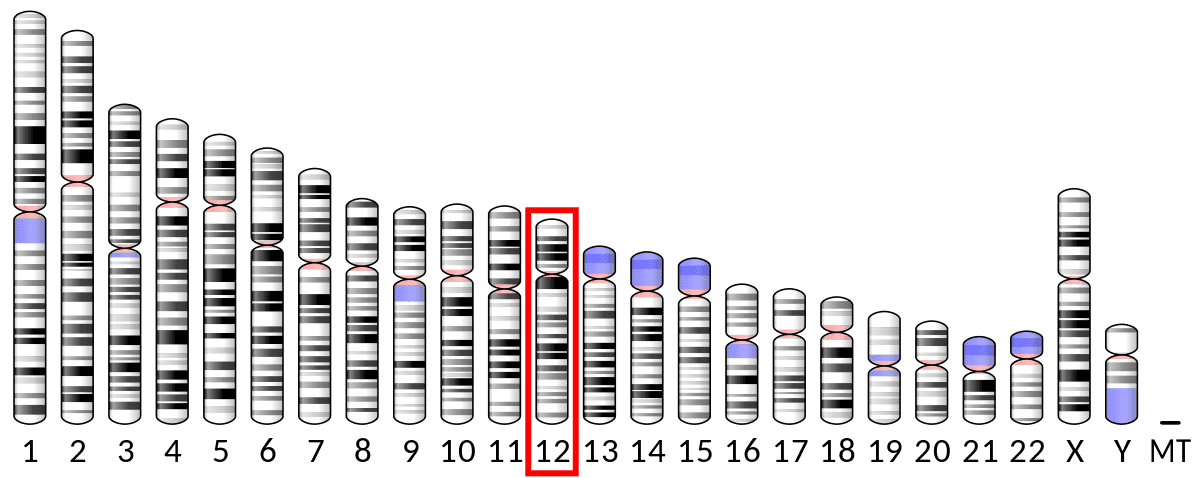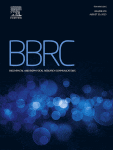The niacin receptor HCAR2 modulates microglial response and limits disease progression in a mouse model of Alzheimer’s disease
Abstract
Increased dietary intake of niacin has been correlated with reduced risk of Alzheimer’s disease (AD). Niacin serves as a high-affinity ligand for the receptor HCAR2 (GPR109A). In the brain, HCAR2 is expressed selectively by microglia and is robustly induced by amyloid pathology in AD. The genetic inactivation of Hcar2 in 5xFAD mice, a model of AD, results in impairment of the microglial response to amyloid deposition, including deficits in gene expression, proliferation, envelopment of amyloid plaques, and uptake of amyloid-β (Aβ), ultimately leading to exacerbation of amyloid burden, neuronal loss, and cognitive deficits. In contrast, activation of HCAR2 with an FDA-approved formulation of niacin (Niaspan) in 5xFAD mice leads to reduced plaque burden and neuronal dystrophy, attenuation of neuronal loss, and rescue of working memory deficits. These data provide direct evidence that HCAR2 is required for an efficient and neuroprotective response of microglia to amyloid pathology. Administration of Niaspan potentiates the HCAR2-mediated microglial protective response and consequently attenuates amyloid-induced pathology, suggesting that its use may be a promising therapeutic approach to AD that specifically targets the neuroimmune response.DISCUSSION
Microglia have emerged as a crucial player in AD pathogenesis and progression (2–4). The characterization and systematization of microglia transcriptional signatures in AD and other CNS disorders have led to a more nuanced understanding of the multifaceted roles of these cells in the normal and diseased brain (33, 53, 54). Microglia represent a highly plastic and heterogenous population that can exhibit a plethora of phenotypes in AD, which confounds the development of effective therapeutic strategies directed at these cells. Thus, the study of specific microglial phenotypes remains critical to understand how to modulate microglia to achieve therapeutic effects in AD. Here, we report that the niacin receptor, HCAR2, acts to limit disease progression in the amyloidogenic mouse model 5xFAD by stimulating a protective response of microglia to amyloid pathology. HCAR2 is required for efficient microglia proliferation, engagement with amyloid deposits, and engulfment of Aβ, which are important microglial features commonly implicated in microglia phenotypes reported to be beneficial in AD (55–59). The present study reports a therapeutic strategy for AD tailored to potentiate microglia neuroprotective actions through the stimulation of HCAR2. The pharmacological activation of HCAR2 could be achieved by an FDA-approved formulation of niacin, Niaspan, with relatively minor adverse side effects (60), which might be repurposed for AD in the clinical setting.The strategy to pharmacologically stimulate HCAR2 in AD takes advantage that the expression of this receptor is robustly induced by microglia in the AD brain, which sensitizes these cells to the actions of HCAR2 ligands. The increase in HCAR2 expression is robustly induced by amyloid deposition that starts very early in AD progression, and to a lesser extent, by tau pathology that is present at later stages of AD progression and other tauopathies.
Niaspan treatment leads to a broad range of positive effects in 5xFAD animals, including reduction of plaque burden and neuronal loss, as well as rescue of working memory deficits. The biological actions of niacin are not limited to HCAR2 activation (10); however, our data show that the beneficial effects of Niaspan in the 5xFAD brain are dependent on the presence of Hcar2. The dose of Niaspan (100 mg/kg) selected to treat 5xFAD mice was determined on the basis of available literature (61–63). Furthermore, according to the human equivalent doses based on body surface area (64), the dosage of Niaspan used to treat mice corresponds to a daily dosage of about 500 mg of Niaspan in humans, which is well below the daily maintenance dose used to treat dyslipidemia (1000 to 2000 mg). Thus, our findings suggest that a low and safe dose of Niaspan might be sufficient to elicit therapeutic effects in AD and are consistent with the existing epidemiological data showing that enhanced dietary niacin is associated with reduced risk for AD (6). Nonetheless, oral administration of niacin often results in cutaneous flushing, which is triggered by HCAR2-mediated production of prostaglandins D2 and E2 by COX-1 and COX-2 within epidermal Langerhans cells and keratinocytes (29, 65). This side effect can be attenuated by aspirin or other COX inhibitors or by antagonism of prostaglandin receptors such as DP1 (29, 65, 66). Niaspan treatment rapidly and robustly increases niacin concentration in the brain of 5xFAD mice, validating niacin ability to cross the blood-brain barrier and exert direct effects in the brain, namely, on microglia. Although we only used male 5xFAD mice in our treatment cohort with Niaspan, our data clearly support an identical role of HCAR2 in amyloid pathology between sexes. Niaspan treatment of 5xFAD animals was initiated after the onset of robust amyloid pathology. The animals were treated at 5 months, a stage of disease in which cognitive deficits are already present because of widespread amyloid deposition and associated neuropathology. These data support that niacin could potentially be administered after onset of robust amyloid pathology and perhaps even in symptomatic stages of AD. Nonetheless, further studies are necessary to assess the efficacy of Niaspan after longer periods of treatment and its effects on different pathological aspects of AD, namely, tau pathology.
The stimulation of microglial response through HCAR2 described in this work is consistent with two recent studies using different models of CNS disease. In each of these cases, niacin treatment induced a broad response from myeloid cells that attenuated pathogenic effects. One study reported that niacin is beneficial in a model of demyelination by modulating macrophages/microglia through HCAR2, underlined by increased microglia coverage, cytokine production, and phagocytosis efficiency (21). Another study using a murine brain tumor model also reported that niacin functioned as immune stimulator and reactivated inefficient macrophages/microglia to control tumor growth (22). Both studies report a stimulatory effect of niacin on the myeloid population present in diseased CNS, composed of both peripherally derived macrophages and microglia. These findings suggest that the effects of Niaspan on microglia documented in this study might be extendable to peripherally derived macrophages that may be present in the human AD brain. Furthermore, niacin has also been investigated as a therapeutic agent for Parkinson’s disease because of its immunomodulatory and neuroprotective properties (18, 67, 68). Clinical trials of niacin for Parkinson’s disease and glioblastoma are currently in progress (NCT03808961 and NCT04677049, respectively). The ability of HCAR2 to modulate the functions of microglia and other immune cells in different contexts suggests a broader role for this receptor in CNS diseases with a neuroimmune component.
There are some limitations to this study. Although our results indicate that microglial HCAR2 acts directly to modulate amyloid pathology, a cautious interpretation is warranted because our in vivo analysis focused on a constitutive knockout of Hcar2 and systemic delivery of Niaspan. Although it has been shown that 5xFAD mice do not exhibit infiltration of peripheral monocytes into the brain (31, 32), we cannot rule out that peripheral cells expressing HCAR2 may also indirectly contribute to the modulation of microglia and amyloid pathology, for example, through soluble factors. The analysis of a murine model with inducible microglia-specific inactivation of Hcar2 will be an important extension of this study, as well as the identification of the molecular mechanisms underlying HCAR2 actions on microglia in AD. We report that 5xFAD mice lacking Hcar2 exhibited a deficient microglia response, which includes a reduction of a subset of transcripts involved in phagocytosis and immune response. However, we did not assess whether the lack of Hcar2 leads to decreased expression and signaling of these genes by direct regulation or is due to the observed reduction in microglia numbers or both, which will be important to analyze in future studies. Although several reports have explored HCAR2 signaling pathways in different cell types linked to its roles in regulating lipid metabolism and immune functions (20, 69–73), the microglial pathways directly regulated by HCAR2 in AD remain largely unexplored.
In summary, we report a therapeutic strategy to modulate microglia functions in AD through the niacin receptor HCAR2, which is required for an efficient microglia response to pathology. We demonstrate that HCAR2 activation with an FDA-approved formulation of niacin, Niaspan, leads to reduced plaque burden and neuronal pathology and rescue of working memory deficits in the 5xFAD mouse model. Thus, niacin is a promising therapeutic agent for AD with a high translational potential for clinical use.

Hydroxycarboxylic acid receptor 2 - Wikipedia
HCA2 activation inhibits lipolytic and atherogenic activity (i.e., it inhibits the breakdown of fats and the development of atherosclerosis), induces vasodilation (i.e., the dilation of blood vessels), and is responsible for mediating niacin-induced flushing.
Full agonists of HCA2 include:
- d-β-Hydroxybutyric acid and β-Hydroxybutyrate
- Butyric acid and Butyrate
- Niacin (nicotinic acid) and Inositol nicotinate
- Cinnamic acid (cinnamon)
- Para-coumaric acid (pollen)
- Pyridineacetic acid (tobacco)
- Fumarates (dimethyl fumarate)
- Pyrazoles (celecoxib)
- Tetrazoles (losartan)
Last edited:

